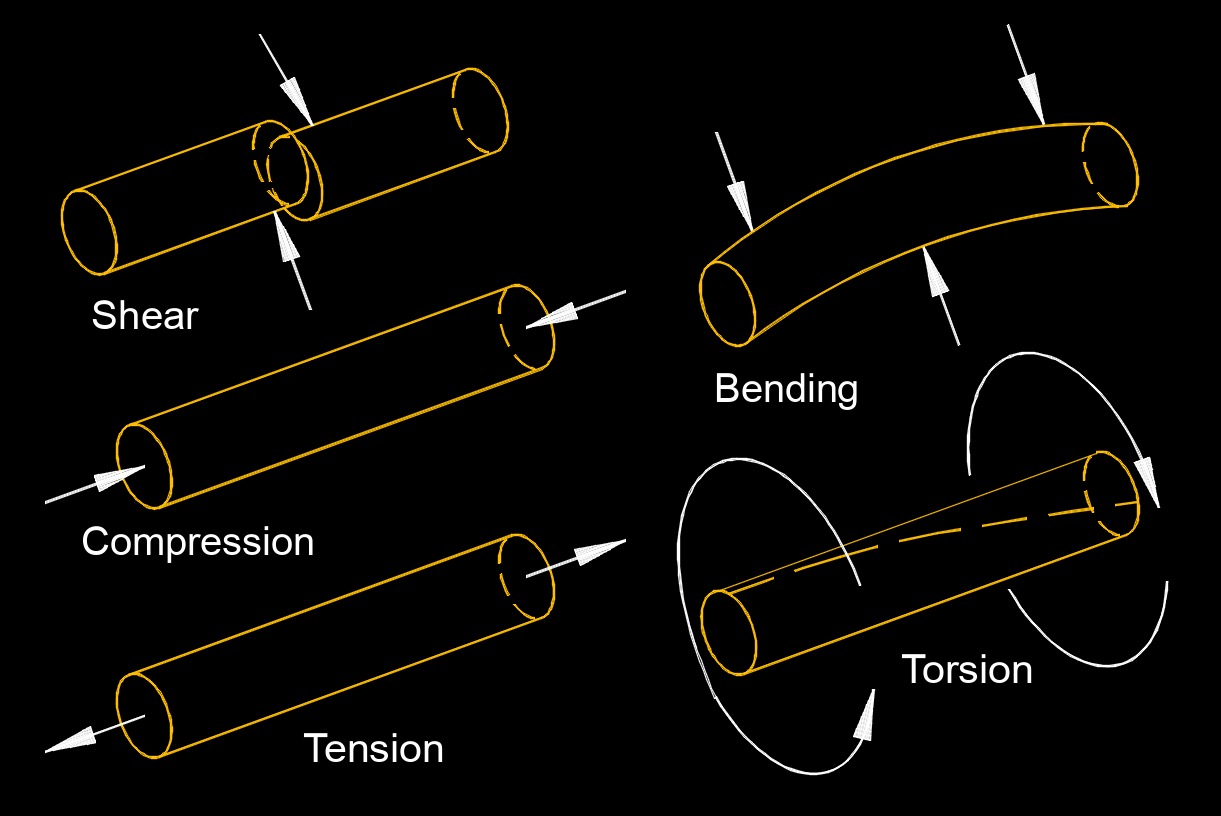Shear
 Shear is the deformation in which layers of a material slide past each other in response to parallel forces acting in opposite directions. This occurs when a force is applied tangentially or parallel to the surface of an object or material. When shear forces are applied to a solid material, it causes the material to undergo shear stress, which leads to shear deformation. The amount of shear deformation depends on factors such as the magnitude of the applied force, the material's properties (shear modulus), and the geometry of the object.
Shear is the deformation in which layers of a material slide past each other in response to parallel forces acting in opposite directions. This occurs when a force is applied tangentially or parallel to the surface of an object or material. When shear forces are applied to a solid material, it causes the material to undergo shear stress, which leads to shear deformation. The amount of shear deformation depends on factors such as the magnitude of the applied force, the material's properties (shear modulus), and the geometry of the object.
Various Physical and Engineering Applications
- Material deformation - Shear deformation occurs in materials subjected to forces that cause sliding or twisting motions, such as cutting, punching, or machining processes.
- Structural engineering - Shear forces can occur in structural elements like beams, columns, and bolts, affecting their stability and load-bearing capacity. Engineers analyze shear forces to ensure that structures can withstand applied loads without failure.
- Fluid mechanics - Shear is a crucial concept in fluid dynamics, where it refers to the rate of change of velocity within a fluid. Shear forces between adjacent layers of fluid give rise to viscosity, a measure of the fluid's resistance to flow.
- Geology - Shear forces and deformation play a role in geological processes such as faulting, where rocks slide past each other along fractures in the Earth's crust.


